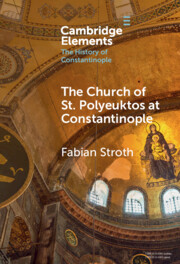Element contents
The Church of St. Polyeuktos at Constantinople
Published online by Cambridge University Press: 16 February 2024
Summary
- Type
- Element
- Information
- Online ISBN: 9781009105729Publisher: Cambridge University PressPrint publication: 21 March 2024



